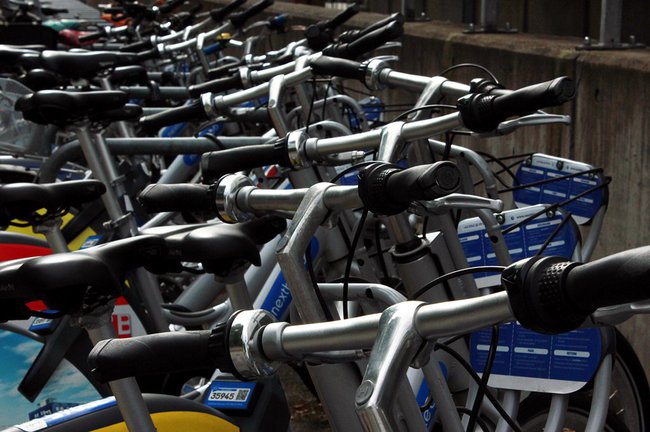The Positive Sides of Active Mobility
Project Explores Effects of Cycling and Walking on Health and Economy

A research project of the St. Pölten UAS develops an evaluation tool to quantitatively ascertain the interdependencies between bicycle and on-foot traffic, health and the economy. The goal is to provide decision-makers with a basis for measures and subsidies.
Active Mobility Becomes Increasingly Important
For several years now, increasing importance has been attached to active mobility which refers to means of transport that rely entirely on muscle strength, for example cycling, walking or riding a pedal-scooter. These are good for people’s health, reduce greenhouse gas emissions and thereby counteract climate change.
“Although the positive effects in the individual sectors are clearly identifiable, measures to promote active mobility across sectors are considered only insufficiently when it comes to planning, the allocation of funds, and political decision-making processes”, says Alexandra Anderluh, a researcher at the Carl Ritter von Ghega Institute for Integrated Mobility Research at the St. Pölten UAS.
Economic Benefit
According to Anderluh, there are only few studies on the economic implications of bicycle transport in Austria; studies on walking are lacking almost entirely. We obviously have some catching-up to do – the more so because international work has shown that the positive effects of active mobility go beyond benefits for health and climate protection. For example, cycling can contribute to increased productivity in associated sectors, and the revenues of local stores increase because more people visit them. Moreover, the health-related implications of active mobility should be quantified in economic terms.
It is these effects that Anderluh and her project partner company tbw research GesmbH are planning to explore in the recently launched research project EFFECTS. Placed on a broad basis, the project strives to combine insights from various individual disciplines (mobility, health, business) in such a way that new knowledge on causal relations is derived. “The insights gained should serve as a basis for decisions and argumentations, thereby contributing to the further development of transport systems towards more sustainability”, explains Anderluh.
Interdependencies, Effects, Key Indicators, and Simulations
The objective of the project is to identify interrelationships between active mobility, health and the economy, document these for the whole of Austria, and prepare key indicators on this basis. The results are to represent a basis for argumentation and knowledge that can be used to figure out where and in which way we can intervene and where further research is needed.
The key figures can then be used to assess the implications of active mobility for people’s health as well as the economic repercussions (value creation, employment, production). Further information such as gender and diversity aspects, lifestyles and age are also taken into account. The key indicators are derived from data already collected, preliminary studies and talks with experts. In addition, the researchers involved in the project simulate development paths and scenarios of active mobility. These simulations help to quantitatively evaluate implications for transport, health and the economic.
“The main intended result of the project is an assessment tool that allows decision-makers in politics, administration and the business world to implement targeted measures in the field of active mobility”, states Anderluh.
Project EFFECTS – Active Mobility, Its Potential and Intersectoral Effects
The project is subsidised by the Federal Ministry for Climate Action, Environment, Energy, Mobility, Innovation, and Technology (BMK) within the framework of the FFG programme “Mobility of the Future”. The project partner is the company tbw research GesmbH.
More about the Project "EFFECTS - Active mobility, its potential and intersectoral effects"
